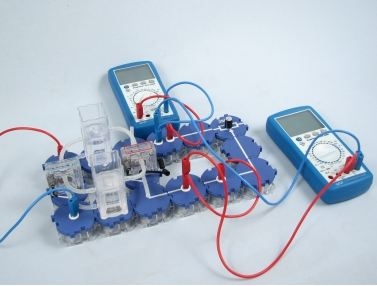Principle
The efficiency of a fuel cell is an indicator of the efficiency of the energy conversion, whereby a differentiation is made between two efficiency types, the energetic efficiency and the faradic efficiency.
The recovery of electric energy from the energy stored in the hydrogen and oxygen must take place as efficiently as possible, as this is important for cost effectiveness.
The efficiency is dependent on many different factors. A few examples of them are how moist the fuel cell is, at which temperature it is operated and which value the atmospheric pressure has. It is therefore not unusual for the efficiency to differ with different fuel cells.
In this experiment, the different efficiencies of a PEM fuel cell are examined and calculated.
Benefits
- Experiment is part of a complete solution set with a total of 10 experiments for Renewable Energy fuel-cell technology
- The power supply used is versatile and is particularly suitable for pupil tests for all ages
- Doubled learning success: Electric circuit diagram on top, real components can be seen at the bottom
Tasks
Does a fuel cell work efficiently?


